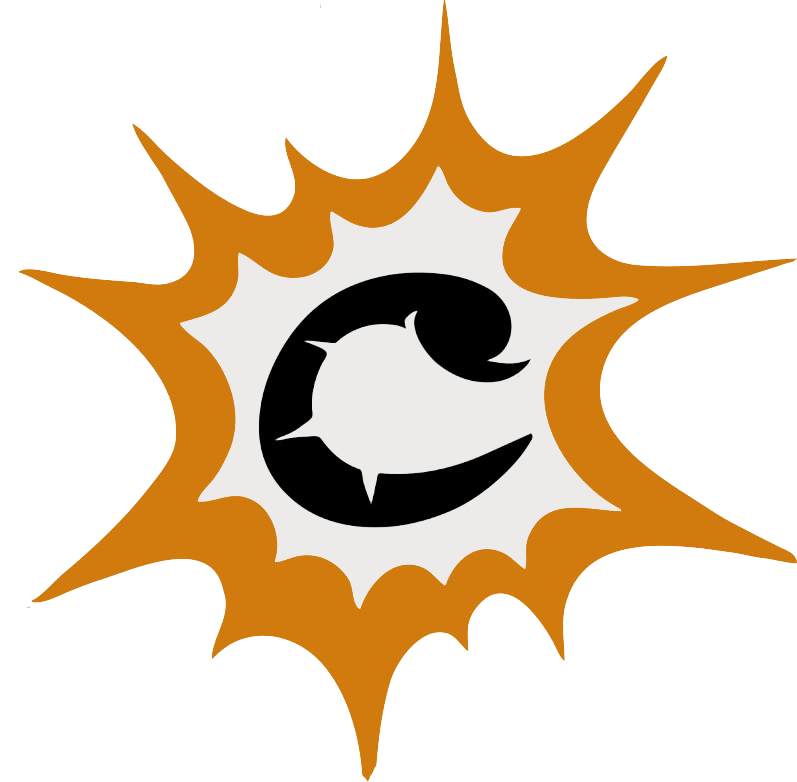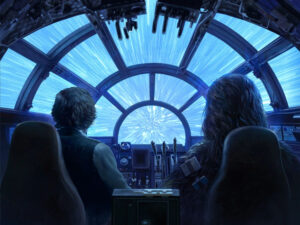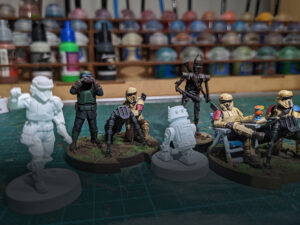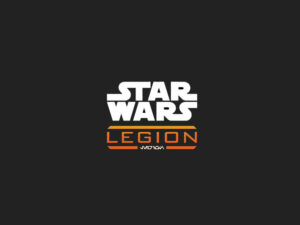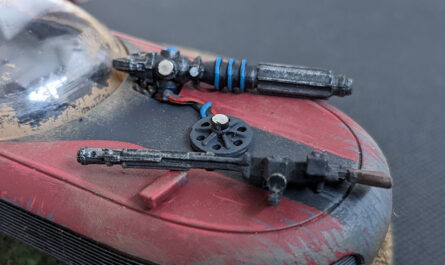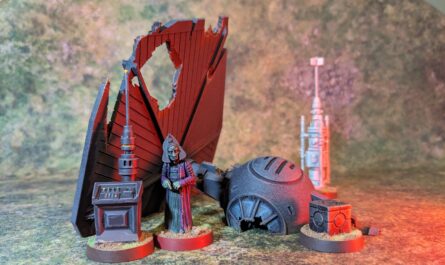You’ve chosen your faction, and you’re going with the Rebel Alliance? But where should you begin your collection? Which units should you purchase to build a competitive army? In this article, I’ll walk you through a roadmap of the most important early purchases for building a Rebel army in Star Wars: Legion.
What should you buy to start a Rebel Alliance army?
The Rebel Alliance Starter
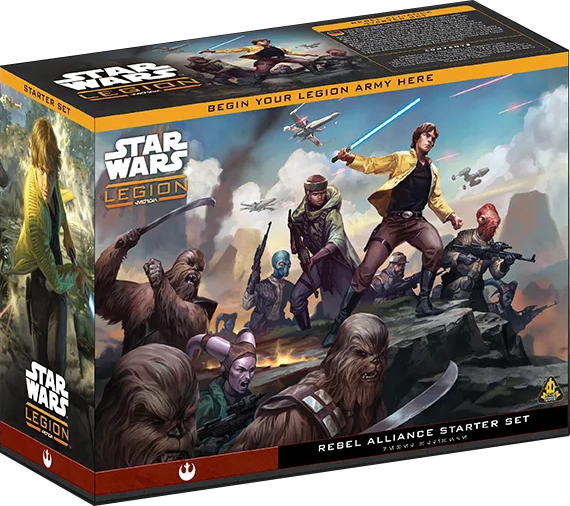

If you’re just getting into Star Wars: Legion, this Starter is by far the best entry point. It contains everything you need to play the Recon format (600 points), while laying the groundwork for a future 1000-point Rebel army in Standard format. The box includes 36 miniatures that allow you to easily build a 600-point army:
- Luke Skywalker, hero of the Rebellion
- 22 Rebel Troopers
- 7 Rebel Commandos
- 6 Wookiee Warriors

Note that Atomic Mass Games lists the number of miniatures, not the number of units. Why? Because your unit configurations will determine how many miniatures are needed to build each unit. For example, a standard Rebel Trooper unit is made up of 4 soldiers. But upgrades like Squad can expand the core size, adding up to 5 more troopers. Based on my estimates, this Starter will allow you to build between 6 and 9 units.
Thankfully, the box doesn’t only include miniatures — it also comes with the cards necessary to run your army:
- 7 unit cards
- 16 upgrade cards
- 10 command cards
- 24 battle cards
As well as game components:
- 20 dice (4 of each type)
- Various tokens
- A full set of movement tools (Long, Medium, and Short)
- Range rulers
In short, the Starter gives you everything you need to play in the Recon format, which requires a 600-point army and is played on a board around 90 x 90 cm. However, be aware that the Standard format is the most popular. It uses 1000-point armies and is played on a 90 x 180 cm table. In other words, if you plan on entering tournaments, you’ll need to expand your army with unit expansions.
Extra dice
As you’ve seen, the Starter Set only includes 4 dice of each type. To improve your gaming experience, I highly recommend purchasing additional dice. This will spare you from having to jot down results between rerolls. It’s common during games to have attack or defense pools with ten or more dice.

Additional dice can be purchased in dedicated packs. Be aware that they are split across two products: one Attack pack and one Defense pack.
Upgrade cards
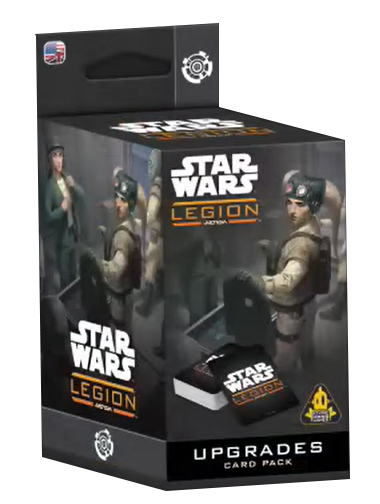
The upgrade card pack provides many enhancements for your units. These will allow you to boost or specialize your units. It’s an essential product but not a mandatory purchase: you can download these cards for free in their Print & Play version on the publisher’s official website (in English).
Visually, these cards lack charm. Unlike the previous version of the game, Atomic Mass Games has not taken the time to illustrate each upgrade individually. I believe it’s not worth spending money on this product — in this case, the print & play version wins.
.
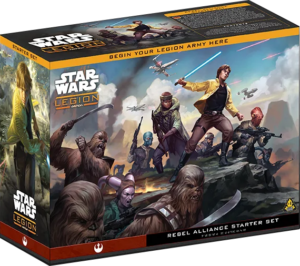
Deploy your first Rebel soldiers at an excellent price ✨
Which units to buy after the starter set?
If, after several games in the Skirmish format, the game has won you over, you have the green light to expand your collection and aim for the 1,000-point format. You can include any units in your army list, and this is where your choices will allow you to come up with original combinations. However, it might be a good idea to expand your collection with the following units:
Heroes
With your starter box, you seriously lack heroes. Sure, Luke Skywalker wields the lightsaber brilliantly, but if he falls in battle, he takes all his command cards with him. It’s better not to put all your eggs in one basket. Fielding multiple heroes gives you more resilience, greater tactical flexibility, and a more intimidating presence on the battlefield for your opponent…
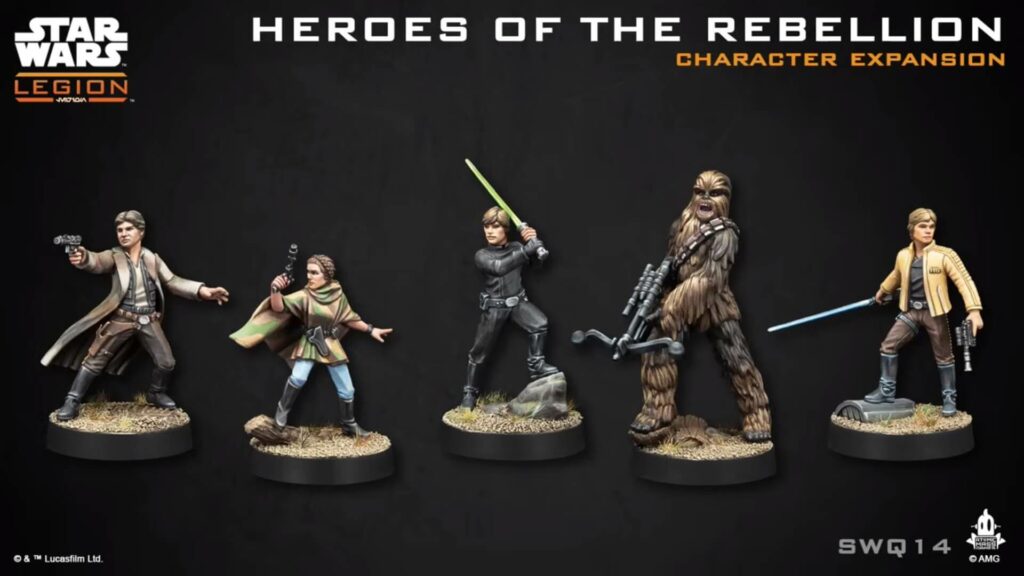
The saga’s heroes are classified either as Commanders (e.g., Leia Organa) or as Operatives (e.g., R2-D2). Regardless of rank, each hero comes with an average of 3 command cards. Since a command hand is limited to 7 cards, you can theoretically take all the cards from two heroes in your army list.
As for hero selection, it all depends on your personal preferences. Each hero has their own playstyle and will synergize better with certain units than others, which can guide you in building the rest of your army. However, a hero’s impact on your overall strategy remains limited in Star Wars: Legion. It’s nothing like what a general can do in A Song of Ice and Fire, where they clearly define the army’s entire gameplan.
Examples
Leia Organa is the iconic commander of the Rebel Alliance, not just on screen but also on the tabletop. Like any good leader, she supports her army as reflected in her keywords: she can distribute Dodge tokens or remove Suppression tokens from allied units, and her Exemplar ability allows nearby friendly units to use her green tokens. For just 75 points, she adds a lot of grease to the Rebellion’s gears — especially since this faction thrives on Dodge tokens.
Han Solo, the unorthodox general – The famous smuggler is more of a quirky commander. Favoring frequent movement and multiple blaster shots, Han Solo is best known in Legion for stirring up trouble. His command card “Change of Plans” is a textbook example of that mindset.
The best Rebel units
Below are the three most played Rebel units in competitive play as of 2025. Keep in mind that a wargame is a living game, which means the rules are updated and unit stats are regularly rebalanced. What’s strong one year might not be the next.
AT-RT
This mechanical walker is all the rage in 2025 thanks to its excellent value for points (only 60 pts). Its laser cannon has Range 4, allowing you to pressure the opponent while holding far-off objectives. As a vehicle, it’s immune to suppression (and panic), and its Armor 2 keyword makes it quite durable — both useful traits for objective control. – Suprise update from 16th of June 2025: AMG increase the cost of the unit (4 points) and the laser canon (5 points).
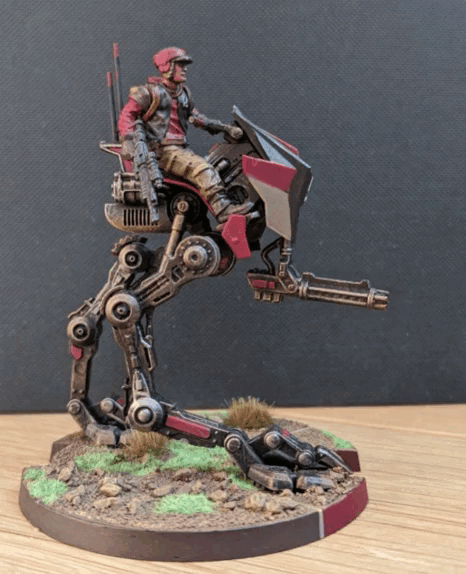
It also offers strategic flexibility in your collection, since its laser cannon can be swapped out for a flamethrower or rotary blaster. In short, the AT-RT is a jack-of-all-trades.
Sleeper Cells
A six-man unit that adds two black dice each to the attack pool — with a hit chance of 5/8 per die — that’s guaranteed damage! Enough to wipe out pretty much anything on the battlefield, heroes included.
Atomic Mass Games is keeping an eye on this unit and has stated they still aren’t sure whether it’s very strong or too strong. Will they get nerfed in fall 2025? Most likely! – Suprise update from 16th of June 2025: AMG increase the cost of the unit (7 points) and the astromech (5 points).

Bad Batch
This team of five or six warriors is not only one of the most durable Rebel units, but also one of the deadliest. With 11 health points, red defense dice (a rare trait among Rebels), and a slew of keywords, the Bad Batch is a walking tank.

Units from a Battle Force
A Battle Force is an alternative type of army list that comes with its own specific rules for army composition and gameplay. It represents a key moment in the Star Wars saga (like the defense of Hoth) or a distinctive themed army. In exchange, it imposes certain restrictions—such as a limited selection of heroes—but it may also offer greater flexibility in your army structure, for example by removing the usual cap on the number of special forces units.
Battle Forces typically come with unique command cards, which can only be used if you’re playing the corresponding Battle Force.
Building your army around a Battle Force is another way to plan your future purchases, as each one focuses on a limited set of units. For instance, the Battle of Bright Tree Village is a Battle Force that lets you field an entire Ewok army. But don’t assume it’s just for laughs—those little furballs helped Tza win the French National Championship two years in a row!
Is it worth buying older Star Wars: Legion products?
Star Wars: Legion was released in 2018, but it has seen several major changes since. Initially published by Fantasy Flight Games (a subsidiary of Asmodee), the game was transferred a few years later to another branch, Atomic Mass Games, as part of an internal reorganization.
When AMG took over Legion, they decided to reboot the game in 2025. So if you’re browsing online and come across older Legion products, you might run into some outdated references. Don’t worry: most Rebel miniatures from these boxes are still valid and can expand your collection — with one exception: the Rebel Pathfinders are no longer playable in the current version of the game. Sad but true…
If you want to dig deeper into this topic, check out the dedicated article:
What to do in case of stock shortages?
Availability of Star Wars: Legion products is neither guaranteed nor consistent. In case of a stock shortage, here are a few options:
- Check online shops in neighboring countries (Italy, Germany, the Netherlands, etc.)—you might find the missing product there. Since Legion products are multilingual, there’s no issue buying them from abroad.
- Turn to the second-hand market. Vinted occasionally lists Star Wars: Legion items. Keep in mind that most older miniatures are still legal to play, only their cards may be outdated.
- Create proxy miniatures and cards. Many talented sculptors sell their 3D creations on platforms like Gumroad, such as SkullForge or DarkFire Designs. As for the cards, you can download them for free from the publisher’s website.
Some tips to avoid regrettable purchases
Paint and play with your heart
One of the greatest joys in wargaming is building your own army—both in unit choices and visual style. Feeling pressured to buy miniatures just because they’re powerful, when they don’t appeal to you, is never a good idea. Painting them will feel like a chore, and they’ll likely take the place of units you actually love in your list. The risk? This hobby, instead of being a source of joy, could become a burden—and may even lead you to quit it altogether.
Try the game first and see how popular it is locally
Getting into a wargame is no small feat. It’s a time-consuming and potentially expensive hobby. So I recommend that you don’t dive headfirst into Legion, but test the waters first. Do you really like this game? To find out, try it:
- Either with a demo from a local player;
- Or through Tabletop Simulator;
- Or by starting with the bare minimum to play (see the first section of this article: “What should I buy to start a Rebel Alliance army?“)
Then, check whether there’s an active player community in your area. It would be a shame to invest in miniatures only for them to gather dust on a shelf.
Buying strong units is good. Understanding why they’re strong is better!
Fielding the best units doesn’t necessarily make for a good army list. It’s better to understand why a unit is considered strong: knowing its role and how it functions within your army helps you identify which other units best complement it. In short, if you understand how to build solid army lists, you’ll more easily identify what units you actually need. In the article below, I share 7 tips to help you build army lists on solid foundations:
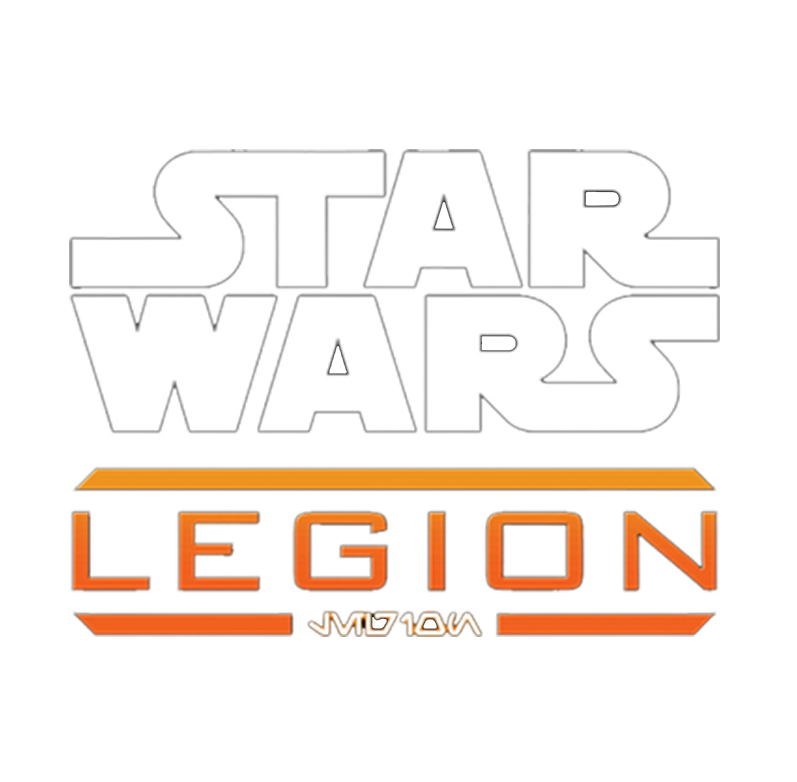
Find Star Wars: Legion players
Join your country’s SWL Discord community and connect with players nearby.
